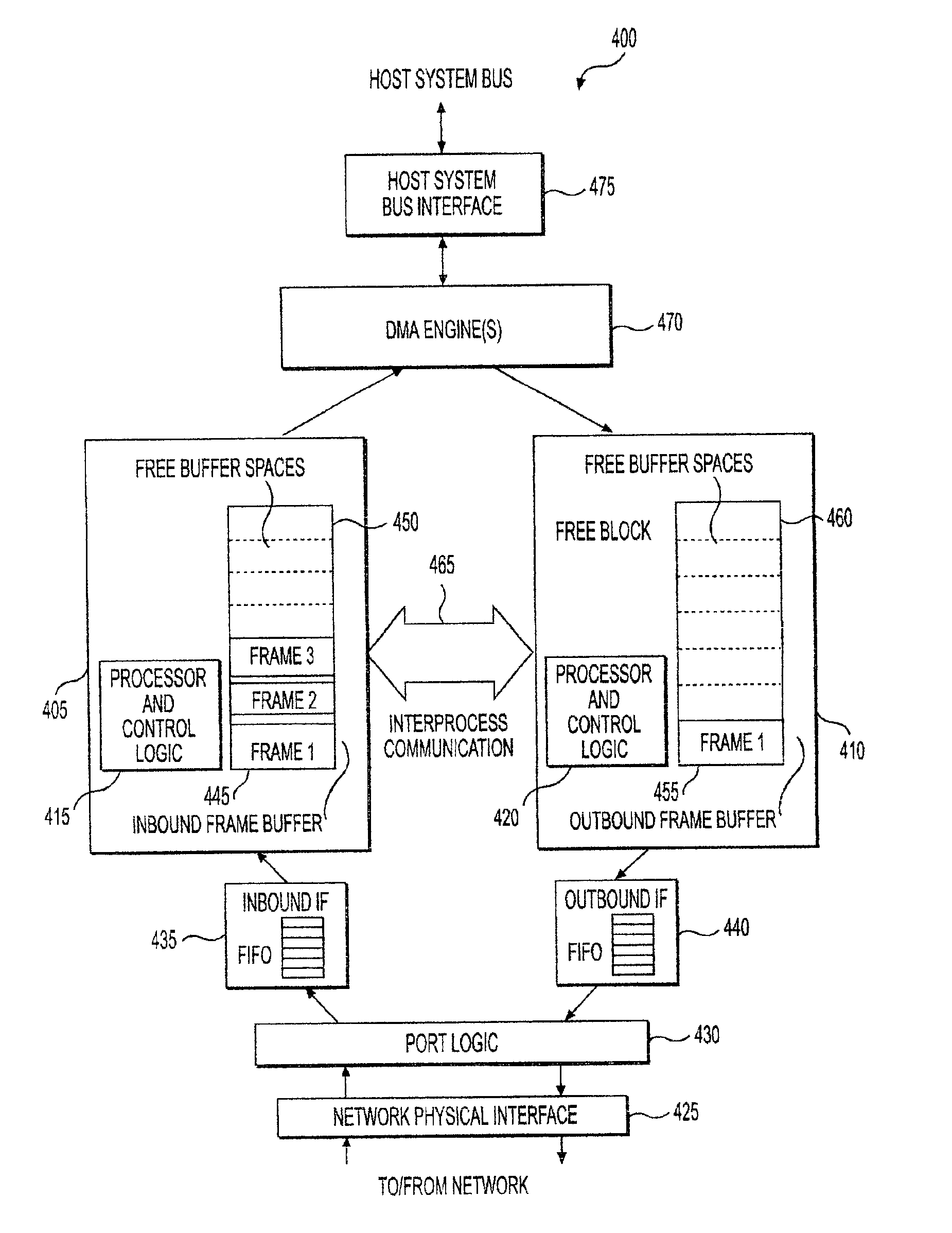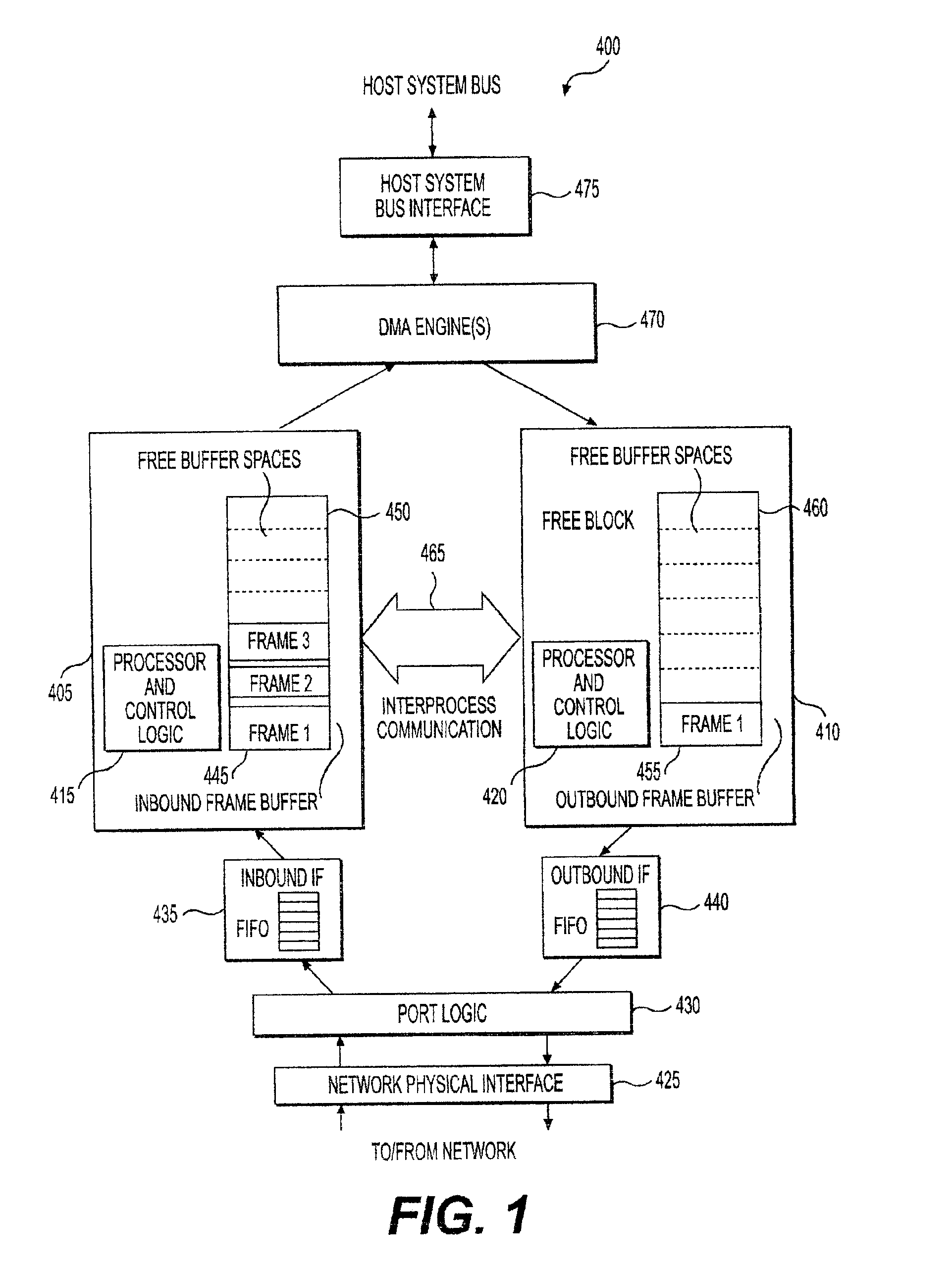Dynamic memory allocation between inbound and outbound buffers in a protocol handler
a protocol handler and buffer technology, applied in the field of dynamic memory allocation in the networking protocol handler, can solve the problems of significant performance degradation, affecting the memory requirements of the protocol handler, and higher costs, and achieve the effect of reducing the need for throttl
- Summary
- Abstract
- Description
- Claims
- Application Information
AI Technical Summary
Benefits of technology
Problems solved by technology
Method used
Image
Examples
Embodiment Construction
The present invention is directed to a method and apparatus for dynamic memory allocation in a networking protocol handler. In particular, the present invention provides dynamic allocating of memory between inbound and outbound paths of a protocol handler to provide an optimal ratio of a given amount of memory between the inbound and outbound buffers.
Data communication within a computer network involves the sharing and / or transfer of information between two or more computers, known as network stations or nodes that are linked together. The idea of dynamically allocating memory within such a computer network can be generalized to apply to a variety of systems, such as controllers, bridges, routers and other network devices. These systems share the feature that traffic on the network links (i.e., incoming and outgoing data) is bi-directional and inbound and outbound processing of data is simultaneous. Otherwise, a single memory unit would suffice. Examples of such systems include Fibr...
PUM
 Login to View More
Login to View More Abstract
Description
Claims
Application Information
 Login to View More
Login to View More - R&D
- Intellectual Property
- Life Sciences
- Materials
- Tech Scout
- Unparalleled Data Quality
- Higher Quality Content
- 60% Fewer Hallucinations
Browse by: Latest US Patents, China's latest patents, Technical Efficacy Thesaurus, Application Domain, Technology Topic, Popular Technical Reports.
© 2025 PatSnap. All rights reserved.Legal|Privacy policy|Modern Slavery Act Transparency Statement|Sitemap|About US| Contact US: help@patsnap.com



